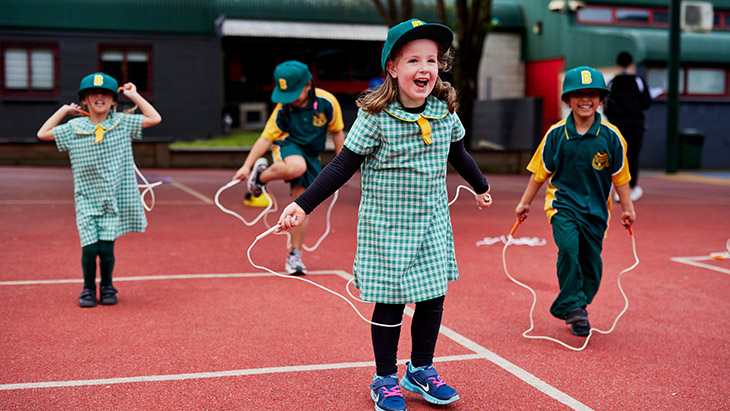Evidence-based strategies for attention
Consider how you communicate
Get their attention before speaking
Eye contact, gestures, and visual or verbal prompts may be used to get student’s attention before giving instructions or speaking to them.
Providing clear and direct instructions
Clear instructions about the learning and associated tasks, the behaviour expected, and how much time students have to work in may be helpful. These instructions may need to be repeated at the start of each new task and complemented with written learning intentions or activities on the board, written prompts for the student on their desk, etc.
Simplify instructions and learning
Consider breaking down big tasks into smaller ones. For example, give step-by-step written and verbal instructions with visual supports (pictures). Other strategies include providing opportunities for the student to respond, using activity sequencing, and allowing choice.
It is helpful to check their understanding before moving on to the next step or activity. For example, some students may like to demonstrate their understanding by repeating instructions or answering questions.
Vary teaching strategies
Consider using pictures, videos, PowerPoint presentations, objects, or demonstrations to explain concepts and tasks. Hands-on lessons can be very engaging.
Use computer software
Multimedia educational software on the computer or tablet may help some students focus on complex lessons, such as mathematics or reading. Interactive software where students can answer questions and receive immediate feedback are good for practising these skills.
Some software can help improve memory and attention. Keep in mind, establishing routines for using technology can be important for enhancing engagement.
Provide feedback
Provide effective, immediate and task focused feedback
Students may respond well when their own and others’ efforts and achievements are given regular, effective feedback. Providing timely feedback regarding appropriate behaviour and behaviour of concern is important. If an instruction is not being understood consider another means of communication such as pictures or demonstrations.
Redirect students
Consider providing verbal feedback to remind students of expectations or redirecting a student who is distracted without causing embarrassment.
Support students to self-manage
Teach self-reflection skills
Consider guiding students to problem solve so they can persist with school work instead of getting frustrated. For example, they can follow these steps mentally or think out loud: “What is the problem?”, “What are my options?”, “I think this is the best option”, “Am I following my plan?” and “How did I do it?”
Access our problem-solving guide.
Teach students how to self-monitor
Consider giving students a checklist of behaviours that they would like to work on (for example, raise their hand to ask a question). Prompt them to check off the list throughout the day. Focus on one behaviour at a time and set goals around achieving this so that the student experiences success.
Access our self-monitoring form.
Modify the environment
Minimise potential distractions
It may be helpful to sit students with their backs facing windows, doors, corridors or other busy areas of the classroom. Classroom materials that might act as distractions such as stationery, books, colourful wall displays or 3D models could be removed when not in use.Let students who are easily disrupted by sounds wear ear plugs or headphones while they work on individual tasks.
Select seating
Consider sitting students near peers who can model appropriate behaviours, or close to you so you can interact with them. Short seat breaks (for example, to run an errand, touch their toes etc.), stability balls, cushions or study carrels may improve focus and restlessness. Similarly, holding Blu Tack or a stress ball may help.
Make class structured
Clear expectations and routines help a student know what is planned for the day so that they know what to do if they have missed instructions. Consider using a daily visual schedule with a timer or clock that students can see at all times.
Design and tailor inclusive activities
Provide choices
Giving students choices in their work can increase engagement. Consider letting them write, draw, point to cue cards, demonstrate or talk to demonstrate their learning.
Match teaching to interests and abilities
Consider what students like and can do to keep things interesting or relevant and manageable for them. As they demonstrate skills or knowledge, provide additional learning by slowly increasing the workload or difficulty.
Provide support
Some students may need help (for example, prompts, demonstrations, effective feedback) from a teacher, School Learning Support Officer (SLSO), Aboriginal SLSO or Aboriginal Education Officer (AEO) when learning new skills. This help can be gradually reduced as they demonstrate the skill or knowledge.
Work collaboratively in groups or with partners
This could help to reduce distractions when clear expectations, routines and procedures around group work are set, making it easier for them to focus. Students can practise new skills, make friends, and learn by watching others. Partners can also redirect a distracted student.
Read more about guiding students to balance their own workload when supporting a peer.
